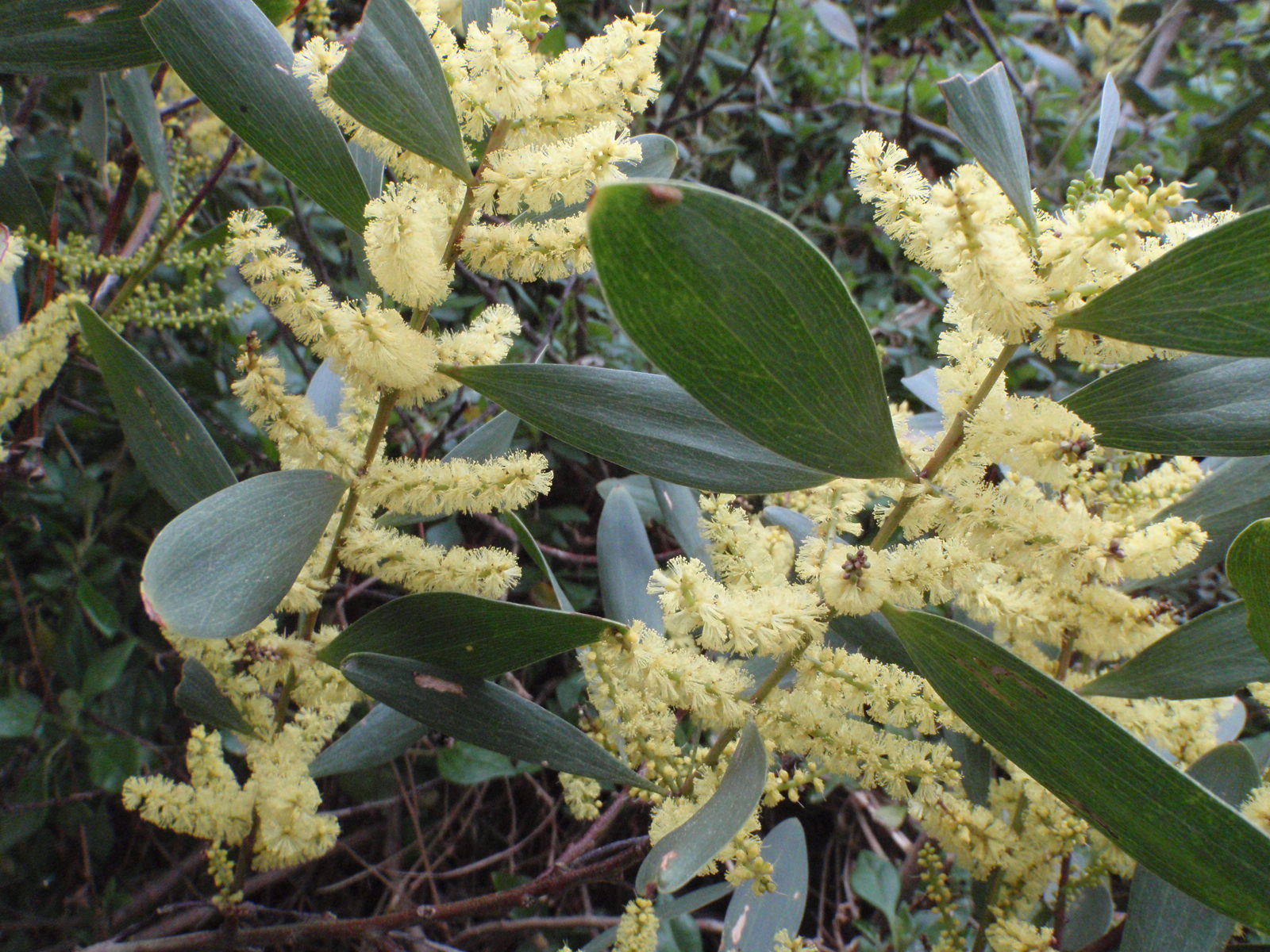Scientific Name: Acacia longifolia subsp. sophorae
Common Name: coast wattle
Family Classification (Clade): Eudicots
Family: Fabaceae
Form Description: Much-branched shrub or small tree.
Height (m): 2 – 5
Flowers: Long straight yellow spikes.
Fruit: Seed pod – thick, narrow, 8-15cm long, tightly coiled, narrowed between seeds.
Municipality
Plant Communities
Habitat Notes
Widespread and frequent on sand dunes and fringing beaches.
Site Tolerance
Dry, Exposed, Windy
Soil Tolerance
Nutrient-poor, Sandy, Well-drained
Frost Tolerance
Moderate
General Notes
This shrub has long arching branches which root and bind the sand. Bee attracting. Resistant to Phytophthora cinnamomi. Susceptible to browsing by hares and rabbits.
Propagation Calendar
-
Flowering Month
Jan Feb Mar Apr May Jun Jul Aug Sep Oct Nov Dec -
Seed Collecting Month
Jan Feb Mar Apr May Jun Jul Aug Sep Oct Nov Dec -
Sowing Month
Jan Feb Mar Apr May Jun Jul Aug Sep Oct Nov Dec -
Cutting Month
Jan Feb Mar Apr May Jun Jul Aug Sep Oct Nov Dec
Propagation Method
Seed Information
Seed Collection
Most acacias are readily propagated by seed. Monitor carefully as seeds are shed on maturity. Pick pods just as they start to dry and change colour. Spread on sheets. Sieve to isolate.
Seed Treatment Method
Hot Water Hot water is used to soften the hard seed case of some species. This replicates the weathering process. Pour hot (not boiling) water over the seeds and allow them to soak for 4-12 hours.
Seed Storage Life
Long
Germination Time
10-30 days
Cutting & Division Information
Cuttings are possible with “phyllode bearing” acacias, more so than with “feathery leaved” species.
